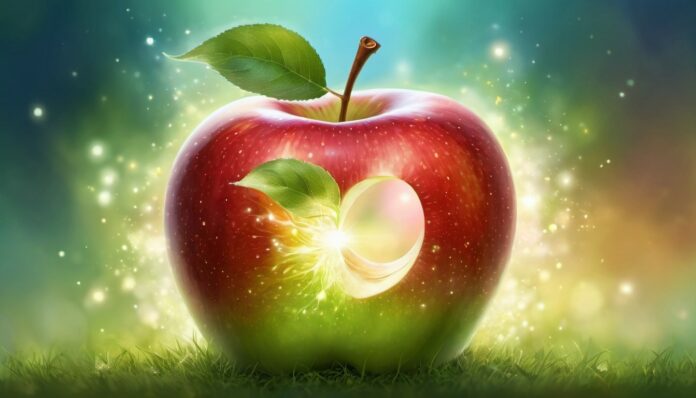When you cut an apple, you expose its inner flesh to air. This exposure triggers a chemical reaction known as oxidation. Enzymes in the apple, particularly polyphenol oxidase (PPO), react with oxygen from the air. This reaction causes the apple’s flesh to turn brown.
What Is Oxidation?
Oxidation is a common chemical process where substances change due to the addition of oxygen. In apples, oxidation involves enzymes and polyphenols (natural compounds in apples) reacting with oxygen. The result is a brown color, which can make the apple look less appealing but doesn’t usually affect its taste or nutritional value.
Can You Prevent It?
Yes, there are simple ways to slow down the browning process. One method is to coat the cut apple with lemon juice. The citric acid in lemon juice lowers the pH on the apple’s surface, reducing the activity of the browning enzymes. Another method is to refrigerate the apple, as lower temperatures slow down the oxidation process.
Does Browning Affect the Apple’s Taste?
The browning of an apple is mostly a visual change. While it might look unappetizing, the taste and texture usually remain the same shortly after cutting. However, if left for too long, the apple can become softer and slightly different in flavor due to prolonged exposure to air.
Why Do Some Apples Brown Less?
Different apple varieties brown at different rates. Apples like Granny Smith have higher acid content and lower PPO levels, which slow down the browning process. Other varieties like Red Delicious have higher levels of PPO and brown more quickly.
Fun Facts About Apple Browning
- Polyphenols: These are the compounds that react with oxygen to cause browning.
- Enzymatic Reaction: The specific type of reaction causing browning is called an enzymatic reaction.
- Antioxidants: Some compounds in apples act as antioxidants and can slow down the browning process.
- Ascorbic Acid: Vitamin C (ascorbic acid) can be used to prevent browning as it acts as an antioxidant.
- Water Bath: Soaking cut apples in saltwater or honey water can also reduce browning.
- Apples in Space: NASA has studied browning to ensure astronauts can enjoy fresh-looking apples during space missions.
- Nutritional Value: Browning doesn’t significantly change the nutritional value of apples.
- Edible Coatings: Scientists are developing edible coatings to prevent browning in pre-cut apple slices.
- Genetic Engineering: There are genetically modified apples, like Arctic Apples, that resist browning.
- Historical Uses: In the past, brown apple slices were sometimes used in folk remedies.
- Cooking: Cooking apples, such as in pies, stops the browning process because heat denatures the enzymes.
- Environmental Factors: Temperature and humidity can affect how quickly apples brown.
- DIY Solutions: Home remedies like vinegar or baking soda baths can be used to prevent browning.
- Natural Resistance: Some wild apple species have a natural resistance to browning.
- Fruit Salads: Combining apples with other fruits like citrus can help keep them looking fresh.
- Cutting Methods: The way you cut an apple can influence how quickly it browns.
- School Lunches: Schools often use pre-treated apples to keep them fresh for student lunches.
- Microwaving: Briefly microwaving apple slices can deactivate enzymes and prevent browning.
Understanding why apples brown when cut can help you enjoy this fruit in its freshest, most appealing form.
